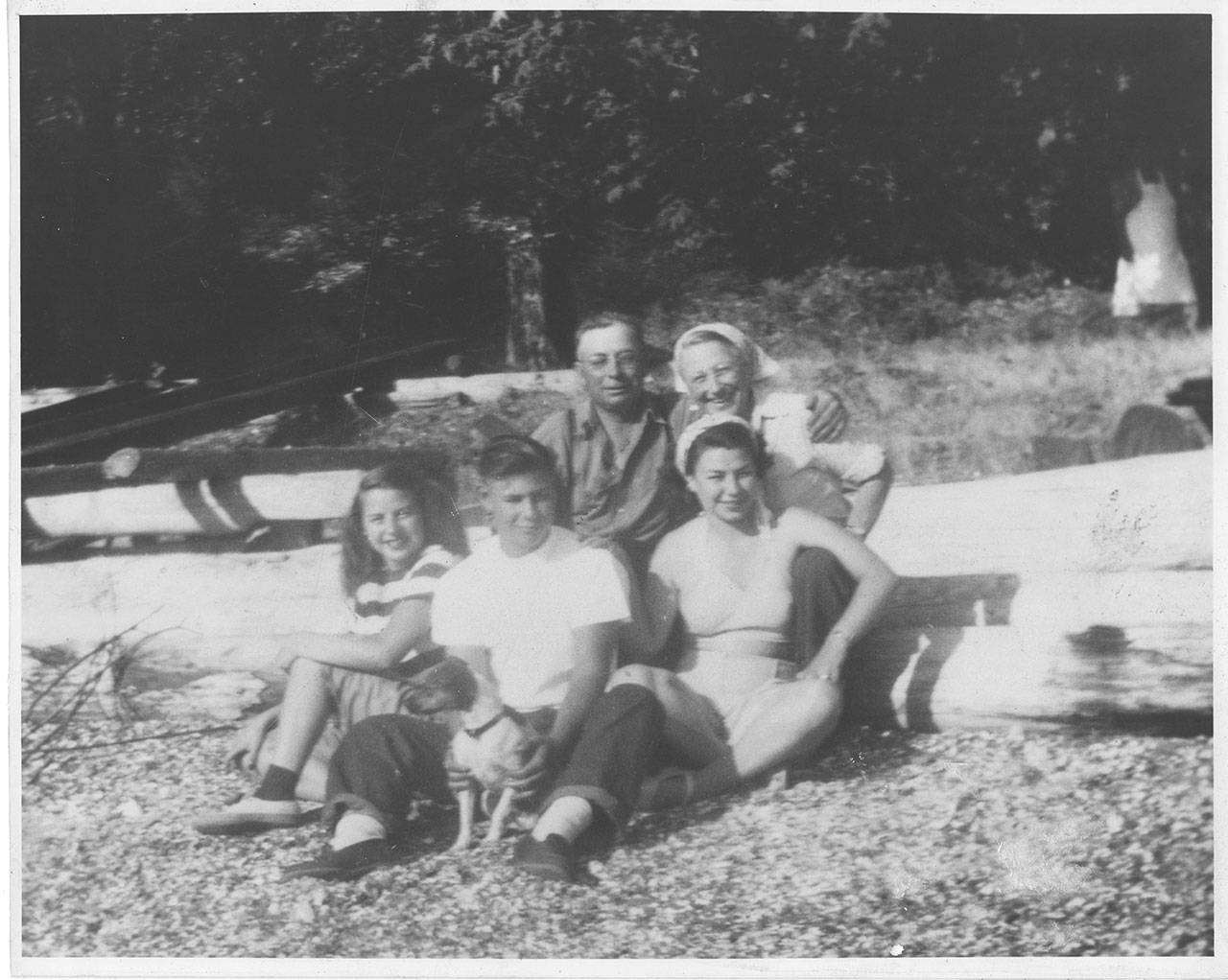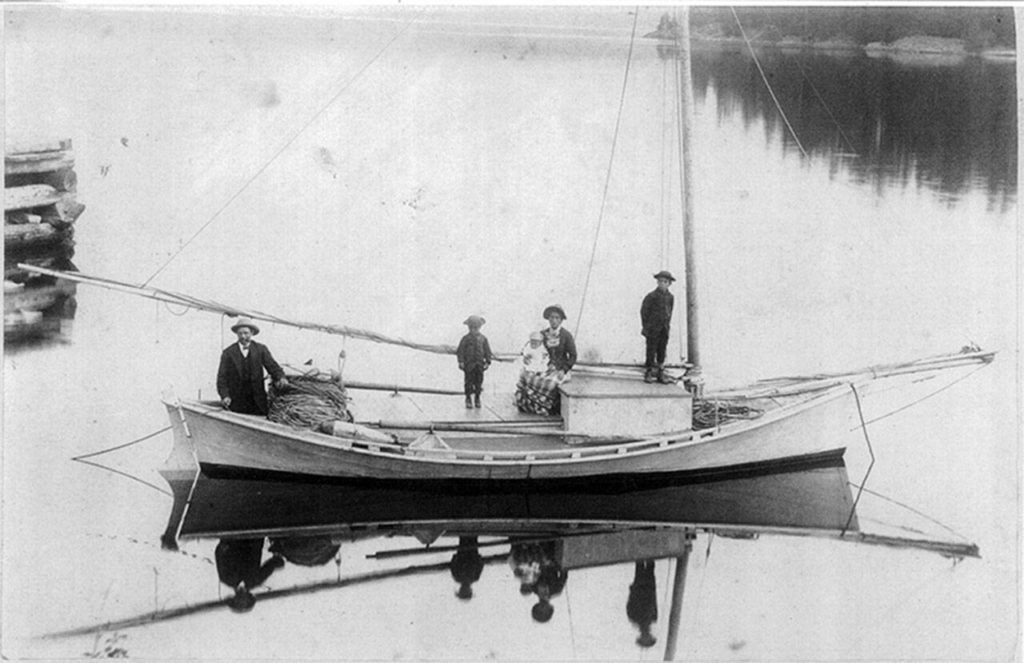By Heather Spaulding / The Journal of the San Juan Islands
The rich culture of Native Americans is still alive in San Juan County. Besides the numerous archeological sites throughout the islands, many families can trace their roots back to the first people who lived and loved in these lands.
“My mom, Betty Chevalier Nash, always used to tell us, ‘Don’t forget you are a card-carrying member of the Upper Skagit as well as being Swinomish and Mitchell Bay tribe decedents,” said Lisa Lawrence, who is one of the islanders who can trace their roots to the San Juan’s first inhabitants. Sure enough, she was sorting through her mother’s belongings when she found a card with her name on it declaring her member of the Upper Skagit Nation.
November is Native American Heritage month. One of the first proponents of creating a day of recognition was Arthur C. Parker, a Seneca Nation citizen. Parker was also director of the Arts and Sciences in Rochester, New York. In the 1930s he convinced the Boy Scouts of America to take one day a year to recognize the “First Americans.” Approximately 75 years later, President George W. Bush proclaimed the entire month of November as Native American Heritage month. The Library of Congress, National Gallery of Art, Smithsonian Institution, Holocaust Memorial Museum and National Park Service work together to pay tribute to the rich ancestry and traditions of Native Americans.
“Native Americans were pretty much just always here,” said Lawrence, who has a bumper sticker on the back of her car that says home since 5893 BCE, or Before the Common Era.
“My great-grandparents’ story, how they met, is very sweet,” Lawrence said.
Edward Chevalier was born in Waterloo, Iowa, and worked in the lime kilns at Roche Harbor. He was rowing one day, with not one but two girls in his boat, when they passed Stuart Island. On the beach, Mary Smith sat while her grandmother brushed her long black hair.
“He wrote in his journal she was the most beautiful woman he had ever seen,” Lawrence said.
He rowed back to Roche Harbor as quickly as he could, dumped off the two girls, and rowed back to Stuart to introduce himself to his future wife. He became known as the King of Spieden. They had several children, the eldest was William Chevalier, Lawrence’s grandfather.
Her family, Lawrence noted, mostly resided in outer islands such as Stuart, Johns, Spieden and Waldron, and they constantly moved around.
In a document petitioning the government for reservation land, her grandmother Mary Smith Chevalier wrote of the elders in her family:
“They move about different places, as they have no home, other than with me.”
According to archeologist Wayne Suttles, there were at least eight tribes that utilized the area. These included the Lummis, Saamish, Swinomish, Songees and a tribe not federally recognized called the Mitchell Bay Band. Many of Lawrence’s ancestors were also members of the Mitchell Bay Band. William Chevalier, according to family documents, was enrolled into that group in 1919.
The tribes seemed to share the islands, each fishing, hunting and harvesting at different times so as not to interfere with each other. They also intermarried, creating tight bonds that allowed them to utilize each other’s allocated schedules. For example, according to Suttles, if one tribe was gathering but wanted to increase their fishing rights, they might marry a son or daughter into a tribe that fished more. That would also benefit the fishing group by increasing their gathering rights. Lawrence’s ancestry provides evidence of intermarriage. She has relatives in Canadian tribal nations, as well as having Swinomish, Mitchell Bay and the Upper Skagit Nations heritage.
In 2015, DNA tests revealed that Kennewick Man is most closely related to contemporary Native Americans like Lawrence.
The Kennewick Man was found in the Columbia River Basin. This was one of the oldest and most complete skeletons found in Washington state. According to longtime islander and avid historian Boyd Pratt, the islands were a mix of different tribes coming from the north, south and east, and as far as he could tell, he said, they often intermarried.
“I feel like the U.S. government made tribes more territorial than they really were. But that’s just my outsider opinion. They know who they are; we don’t need to tell them who they are,” he said.
As the U.S. government claimed the islands, they opened the land up to homesteading. The Native Americans who had called the area home for thousands of years were suddenly uprooted. They could not homestead their own land, since they were not considered U.S. citizens.
Many women, however, married these new settlers. Karen Jones-Lamb detailed many of these relationships in her book “Native American Wives,” written in 1994.
“Native wives blended aspects of their original culture with that of the men they chose as their lifemates,” Jones-Lamb writes in the book’s introduction.
“It must have been odd for them to have lived in the natural and spiritual world all of their lives and to see the coming of the steamers and the industry, high fashion, formal homes and gardens now supplanting their canoes and longhouses and entire way of life,” she continues.
“My grandfather loved animals. He didn’t like to kill anything,” Lawrence said, explaining her grandmother, Elizabeth Graignic, often was the one to slaughter livestock.
Lawrence also discussed the local ramifications of the Boldt Decision in the 70s. The decision upheld treaties that gave Native Americans 50 percent of the catch, and it created such a rift that white fisherman blocked the ferries with their boats in protest, Lawrence recalled.
At the time of the Boldt decision, there were few native fishermen in San Juan County. Due to the increase in their quota, and their few numbers, they found themselves able to fish 30 days in a row. The issue became so contentious, Lawrence’s father didn’t want to fish at all, afraid everyone would hate him, so her mother, Betty Chevalier Nash and their son Pat took the boat out without him.
Pratt said that these Native American wives were vital to the community.
“They knew how to cook, hunt, farm, do everything,” he said. “The white settlers would not have survived without them.”
Pratt also said Native American women helped create a peaceful environment.
“They looked out for each other, and these women were looked up to and loved by the community,” he said.
This story originally appeared in The Journal of the San Juan Islands, a sibling paper of The Daily Herald.
Talk to us
> Give us your news tips.
> Send us a letter to the editor.
> More Herald contact information.


























